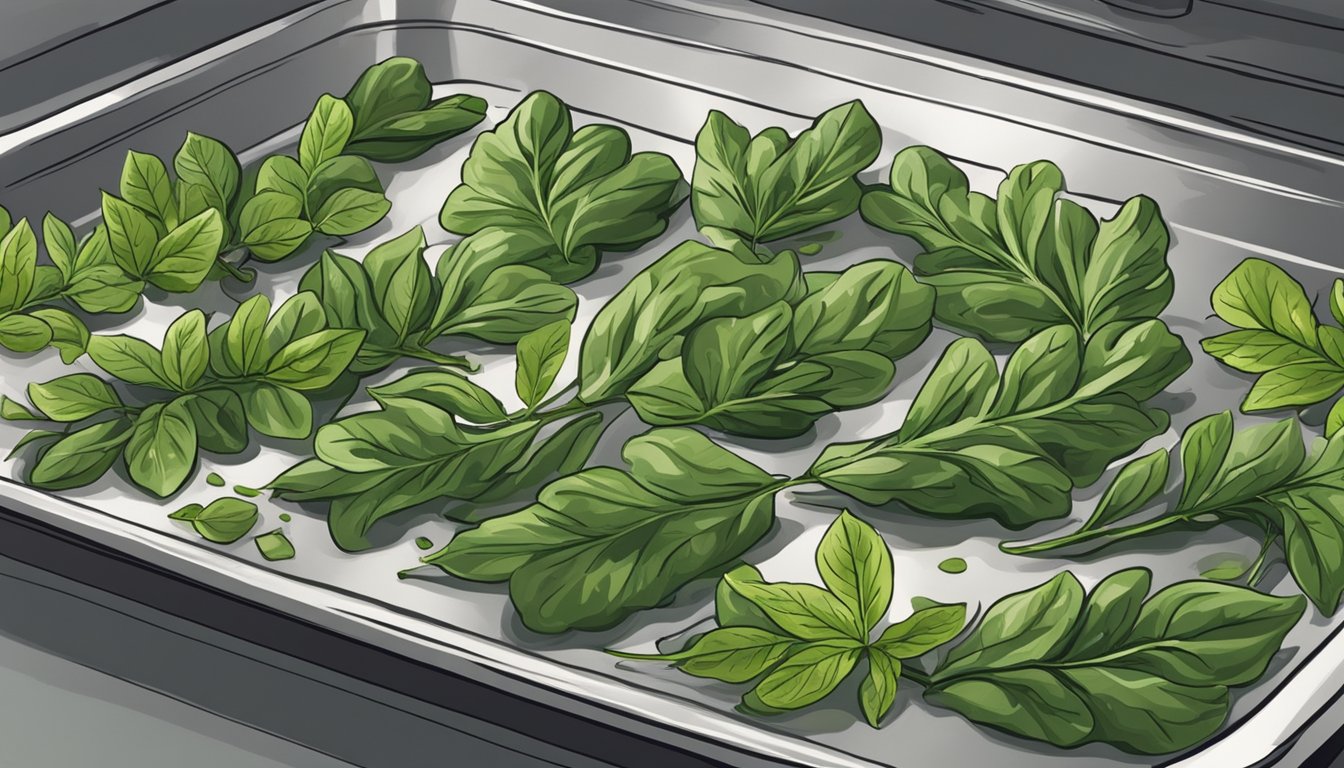TheHerbProf.com is a treasure trove of knowledge for those interested in natural healing and herbal remedies. The website is run by Paul Johnston MD. A naturopathic who has not only received extensive education in the field but also has personal experience in self-healing.
Drying herbs in oven is an uncomplicated and efficient method to retain the taste and scent of fresh herbs. Whether you have a surplus of herbs from your garden or wish to prepare for the colder months, oven-drying herbs is an excellent strategy to extend their shelf life.
When drying herbs in the oven, it’s important to use a low temperature and a well-ventilated space to prevent the herbs from cooking or losing their potency. The process involves spreading the herbs out on a baking sheet and placing them in the oven for several hours until they are completely dry. Once dry, the herbs can be stored in airtight containers and used in a variety of recipes, from soups and stews to sauces and marinades.
Using the oven to dry herbs is a convenient and cost-effective alternative to other methods of preservation, such as air-drying or dehydrating. With a little bit of patience and attention, you can enjoy the flavors and aromas of fresh herbs all year round.
Why Drying Herbs in Oven is Beneficial
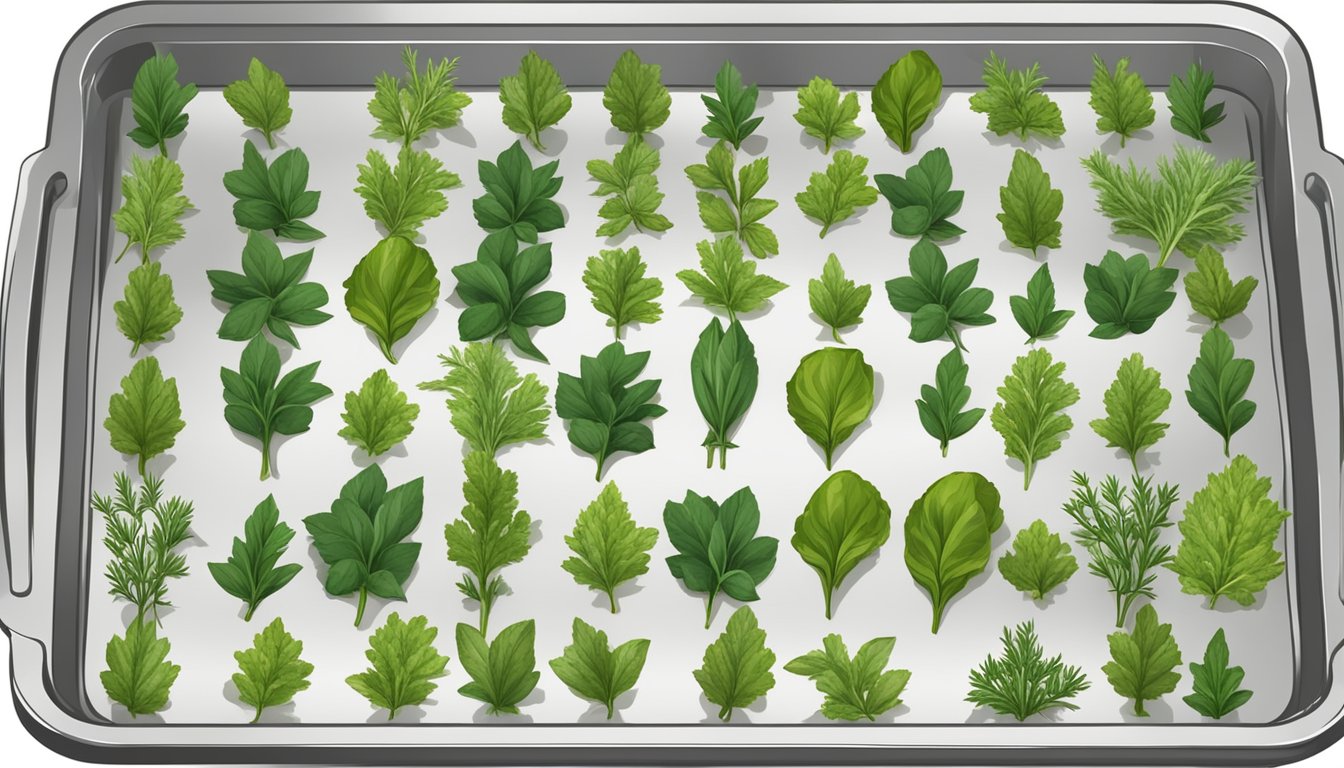
As an avid cook and herb enthusiast, I highly recommend drying herbs in the oven for several reasons. Not only does it preserve herbs for later use, but it also concentrates their flavor and potency. Additionally, drying herbs in the oven is a cost-effective way to ensure that you always have fresh herbs on hand.
Preserves Herbs for Later Use
Drying herbs in the oven is an excellent way to preserve them for later use. Fresh herbs are not always available year-round, and they can be expensive to purchase out of season. By drying herbs in the oven, you can ensure that you always have a supply of your favorite herbs on hand. Dried herbs can last for up to a year when stored in an airtight container in a cool, dry place.
Concentrates Flavor and Potency
Drying herbs in the oven also concentrates their flavor and potency. The heat from the oven removes the moisture from the herbs, intensifying their flavor and aroma. This makes dried herbs a great addition to soups, stews, and other dishes that require long cooking times. Additionally, dried herbs are more potent than fresh herbs, so you can use less of them in your recipes.
Cost-Effective
Drying herbs in the oven is a cost-effective way to ensure that you always have fresh herbs on hand. Fresh herbs can be expensive, especially if you need a large quantity for a recipe. By drying herbs in the oven, you can purchase fresh herbs in bulk when they are in season and dry them for later use. This not only saves you money but also ensures that you always have a supply of your favorite herbs on hand.
Overall, drying herbs in the oven is a simple and effective way to preserve herbs for later use while also intensifying their flavor and aroma. It is a cost-effective way to ensure that you always have fresh herbs on hand, and it’s a great way to get the most out of your herb garden.
Preparing Drying Herbs in Oven
Drying herbs in the oven is an easy and convenient way to preserve the flavors and aromas of fresh herbs. However, before putting the herbs in the oven, it is important to prepare them properly. In this section, I will explain the steps to prepare herbs for drying in the oven.
Harvesting at the Right Time
Harvesting herbs at the right time is crucial for the best flavor and aroma. For most herbs, the best time to harvest is in the morning, after the dew has evaporated, but before the sun is too hot. The plants should be healthy and free from pests and diseases. I usually harvest the herbs when they have reached their peak growth and before they start to flower. This is when the essential oils are most concentrated.
Washing and Drying Herbs
After harvesting the herbs, I wash them to remove any dirt, dust, or insects. I fill a bowl with cold water and gently swish the herbs in it. Then, I transfer the herbs to a colander and rinse them under running water. I shake off the excess water and lay the herbs on a paper towel to dry. Alternatively, I let the herbs air dry completely by spreading them on a clean towel or a wire rack.
Removing Stems
Before drying the herbs, I remove the stems, which can be tough and woody. I hold the stem with one hand and strip the leaves off with the other hand. For some herbs, such as rosemary or thyme, I leave the leaves on the stem and dry them whole. For other herbs, such as basil or parsley, I remove the leaves from the stem and dry them separately.
By following these simple steps, you can prepare your herbs for drying in the oven. Remember to handle the herbs gently to avoid bruising or damaging them. Also, make sure that the herbs are completely dry before putting them in the oven, as any moisture can cause them to mold or spoil.
Methods of Drying Herbs in Oven
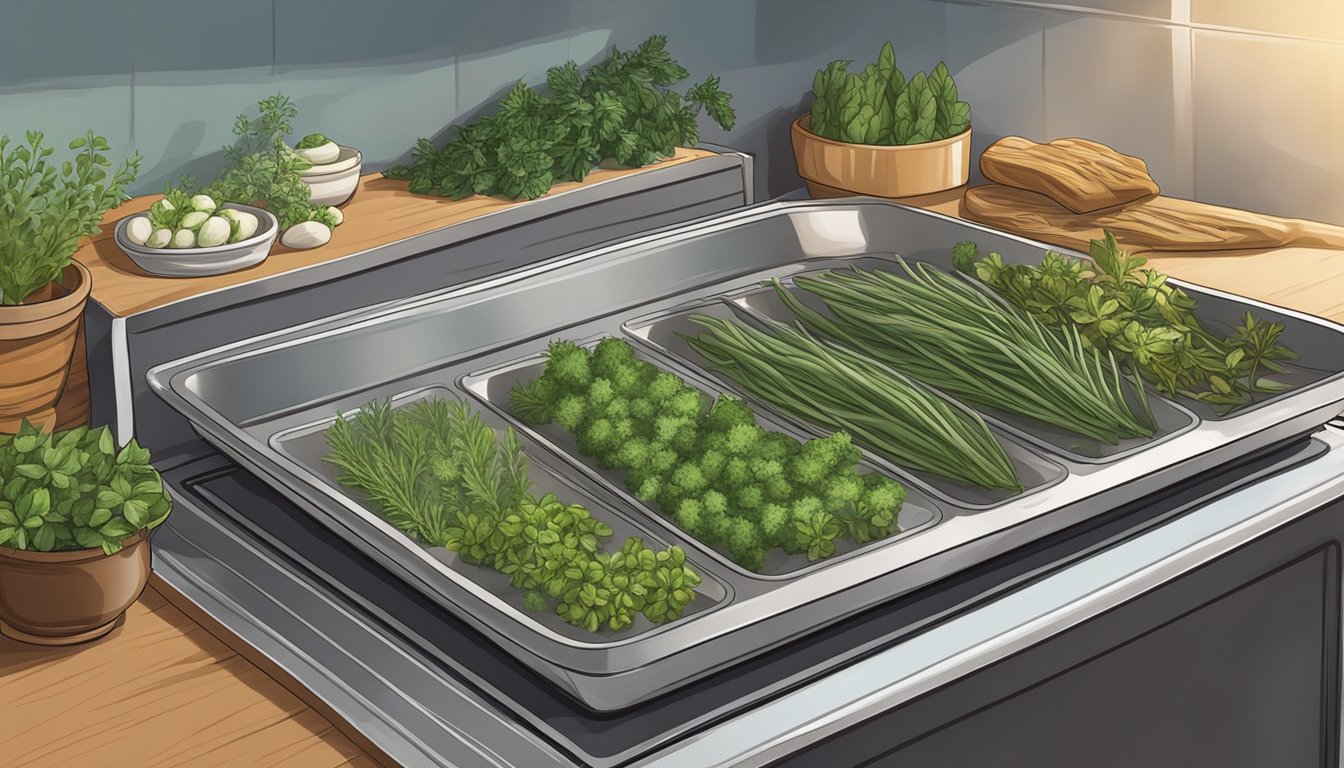
When it comes to drying herbs, there are several methods you can choose from. Each method has its own advantages and disadvantages. Here are some of the most common methods of drying herbs:
Air Drying
Air drying is the most traditional and easiest method of drying herbs. To air dry herbs, you need to gather them in small bunches and tie them together with a string. Then, hang them upside down in a dry, dark, and well-ventilated area. The drying process can take up to two weeks, depending on the herb and the humidity in the air.
Oven Drying
Oven drying is a quick and easy method of drying herbs. To oven dry herbs, you need to preheat your oven to the lowest temperature. Then, spread the herbs out on a baking sheet and place them in the oven. Leave the oven door slightly open to allow the moisture to escape. The drying process can take up to four hours, depending on the herb and the temperature.
Microwave Drying
Microwave drying is a fast and convenient method of drying herbs. To microwave dry herbs, you need to place the herbs on a paper towel and microwave them on high for one minute. Check the herbs and microwave them in 30-second intervals until they are dry.
Dehydrating
Dehydrating is a method of drying herbs that uses a dehydrator machine. To dehydrate herbs, you need to spread them out on the trays of the dehydrator and turn it on. The drying process can take up to 24 hours, depending on the herb and the temperature.
Desiccant Drying
Desiccant drying is a method of drying herbs that uses a desiccant material, such as silica gel. To desiccant dry herbs, you need to place the herbs in a container with the desiccant material and seal it. The drying process can take up to two weeks, depending on the herb and the humidity in the air.
Overall, each method of drying herbs has its own advantages and disadvantages. You can choose the method that works best for you based on your time, equipment, and preferences. When using an oven or a dehydrator, make sure to keep the temperature low to avoid burning the herbs. Also, avoid direct sunlight when air drying herbs as it can cause them to lose their flavor and color.
Tips for Successful Drying

Use Low Temperature
To successfully dry herbs in the oven, it is important to use a low temperature setting. I recommend setting the oven to the lowest temperature possible, usually around 170 degrees Fahrenheit. This low temperature will help preserve the flavor and color of the herbs.
Spread Herbs in a Single Layer
When drying herbs in the oven, it is important to spread them out in a single layer on a baking sheet. This will ensure that the herbs dry evenly and thoroughly. If the herbs are stacked on top of each other, they may not dry properly and could become moldy.
Rotate Trays for Even Drying
To ensure that the herbs dry evenly, it is a good idea to rotate the baking sheet every 30 minutes or so. This will help to ensure that all of the herbs are exposed to the heat evenly.
Test for Dryness
To test if the herbs are dry, simply touch them lightly. If the leaves crumble easily, they are dry and ready to be removed from the oven. If they are still pliable, they need more time to dry.
It is important to store the dried herbs properly to maintain their flavor and potency. Store them in airtight containers in a cool, dry place away from direct sunlight. With these tips, you can successfully dry your herbs in the oven and enjoy them throughout the year.
Before You Go – Drying Herbs in Oven
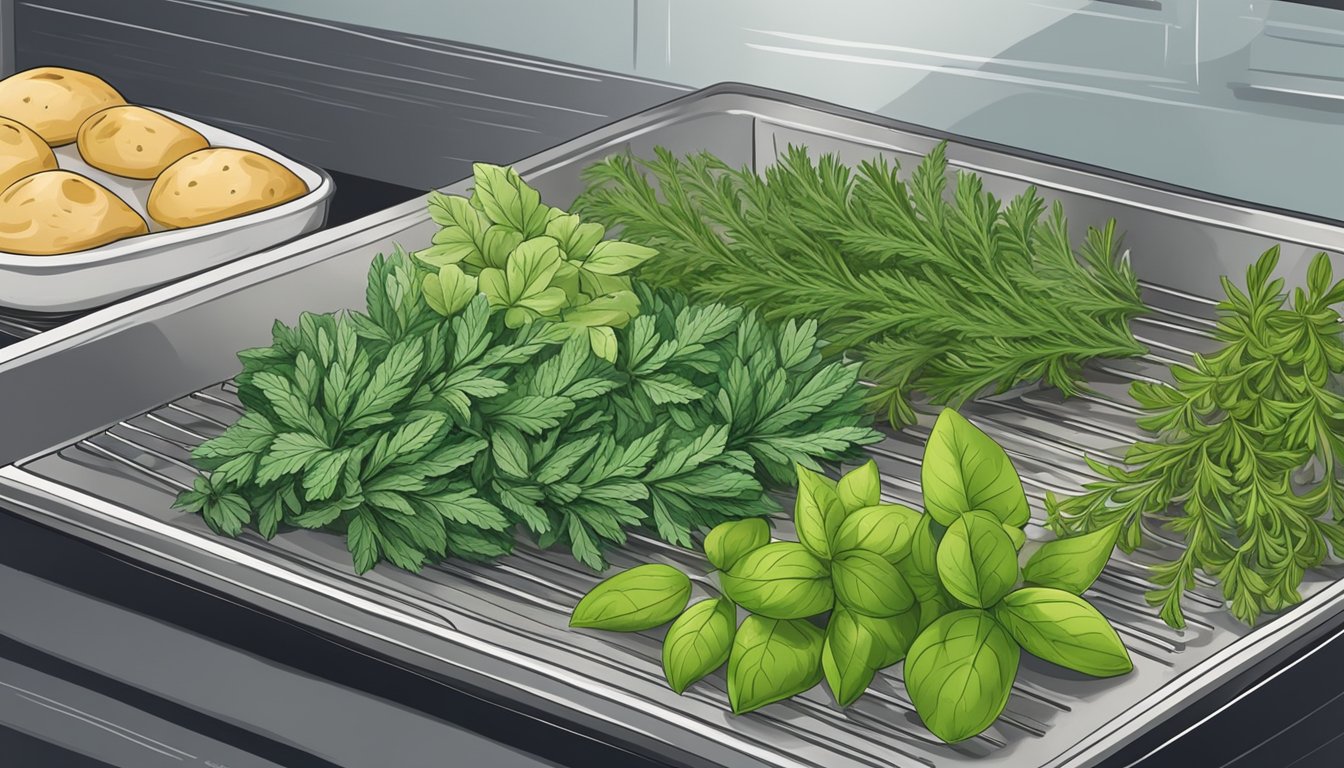
Drying herbs in the oven is a great way to preserve the flavor of your favorite herbs. Now that I have learned how to dry herbs in the oven, I can use them in many different ways.
One of the best things about using dried herbs is that they can be stored for long periods of time. When storing dried herbs, it is important to use an airtight container to maintain their freshness. Mason jars or other airtight containers work well for this purpose.
When it comes to drying methods, oven drying is a great option because it is easy and requires minimal effort. However, it is important to keep an eye on the herbs while they are drying to prevent burning.
Overall, I would highly recommend drying herbs in the oven to anyone who wants to preserve the flavor of their favorite herbs. It is an easy and cost-effective way to enjoy fresh herbs all year round.
Connecting Drying Herbs in Oven with TheHerbProf.com
Drying Herbs in Oven and TheHerbProf.com go together like basil and tomatoes! Let’s explore how these two can help each other.
First, let’s talk about Drying Herbs in Oven. It’s a fantastic way to preserve the flavor and aroma of your favorite herbs. Plus, it’s easy and efficient!
Now, let’s turn to TheHerbProf.com. This website is a goldmine of information about herbs. It’s the perfect place to learn about the benefits and uses of the herbs you’re drying.
So, how do they help each other? Well, Drying Herbs in Oven gives you a practical way to preserve your herbs. Meanwhile, TheHerbProf.com helps you understand why you’d want to preserve these herbs in the first place.
In short, they’re a perfect pair! So, start drying your herbs in the oven and deepen your herbal knowledge at TheHerbProf.com. It’s a flavorful journey you won’t want to miss!
References – Drying Herbs in Oven
Little Herb Encyclopedia, by Jack Ritchason; N.D., Woodland Publishing Incorporated, 1995
The Ultimate Healing System, Course Manual, Copyright 1985, Don Lepore
Planetary Herbology, Michael Tierra, C.A., N.D., Lotus Press, 1988
Handbook of Medicinal Herbs, by James A. Duke, Pub. CRP Second Edition 2007
The Complete Medicinal Herbal, by Penelope Ody, Published by Dorling Kindersley
Check the Following Articles!
Herbalife Baked Goods Recipes: Healthy Lifestyle
Growing Herbs Kit: Starting Your Own Herb Garden
Herb for Hot Flashes: Remedies for Menopausal Symptoms
Frequently Asked Questions – Drying Herbs in Oven
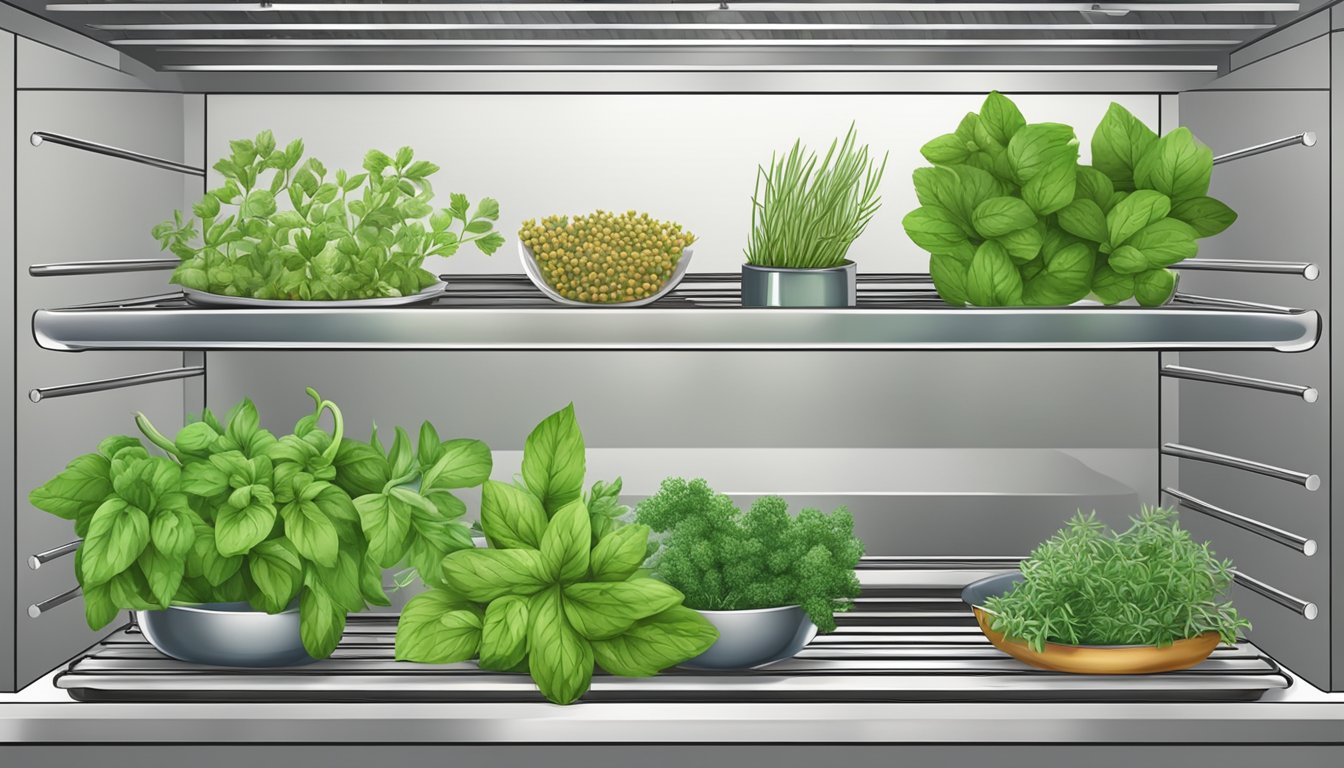
What are some alternative methods for drying herbs besides using an oven or dehydrator?
There are several alternative methods for drying herbs, including air-drying, microwave drying, and using a food dehydrator. Air-drying is the most traditional method and involves hanging the herbs in a well-ventilated area until they are completely dry. Microwave drying is a quick and easy method, but it can be difficult to get the herbs evenly dried. Using a food dehydrator is a popular method because it is easy to use and produces consistent results.
What are the best herbs to dry for culinary purposes?
The best herbs to dry for culinary purposes are those that have a strong flavor and aroma, such as basil, thyme, oregano, rosemary, and sage. These herbs are commonly used in a variety of dishes and can be easily dried and stored for later use.
How long does it take to dry herbs in a dehydrator?
The amount of time it takes to dry herbs in a dehydrator will depend on the type of herb and the moisture content. Generally, it takes between 1-4 hours to dry herbs in a dehydrator. It is important to check the herbs regularly and remove them once they are completely dry.
What temperature should I use to dry herbs in the oven?
The ideal temperature for drying herbs in the oven is between 90-110°F (32-43°C). It is important to keep the temperature low to prevent the herbs from cooking or losing their flavor.
Can I use a convection oven to dry herbs?
Yes, a convection oven can be used to dry herbs. However, it is important to reduce the temperature by 25°F (14°C) and reduce the drying time by 10-15 minutes to prevent over-drying.
What are some common mistakes to avoid when drying herbs for medicinal use?
When drying herbs for medicinal use, it is important to avoid using herbs that have been treated with pesticides or other chemicals. It is also important to avoid over-drying the herbs, as this can cause them to lose their potency. Finally, it is important to store the dried herbs in a cool, dry place to prevent mold and mildew from forming.
